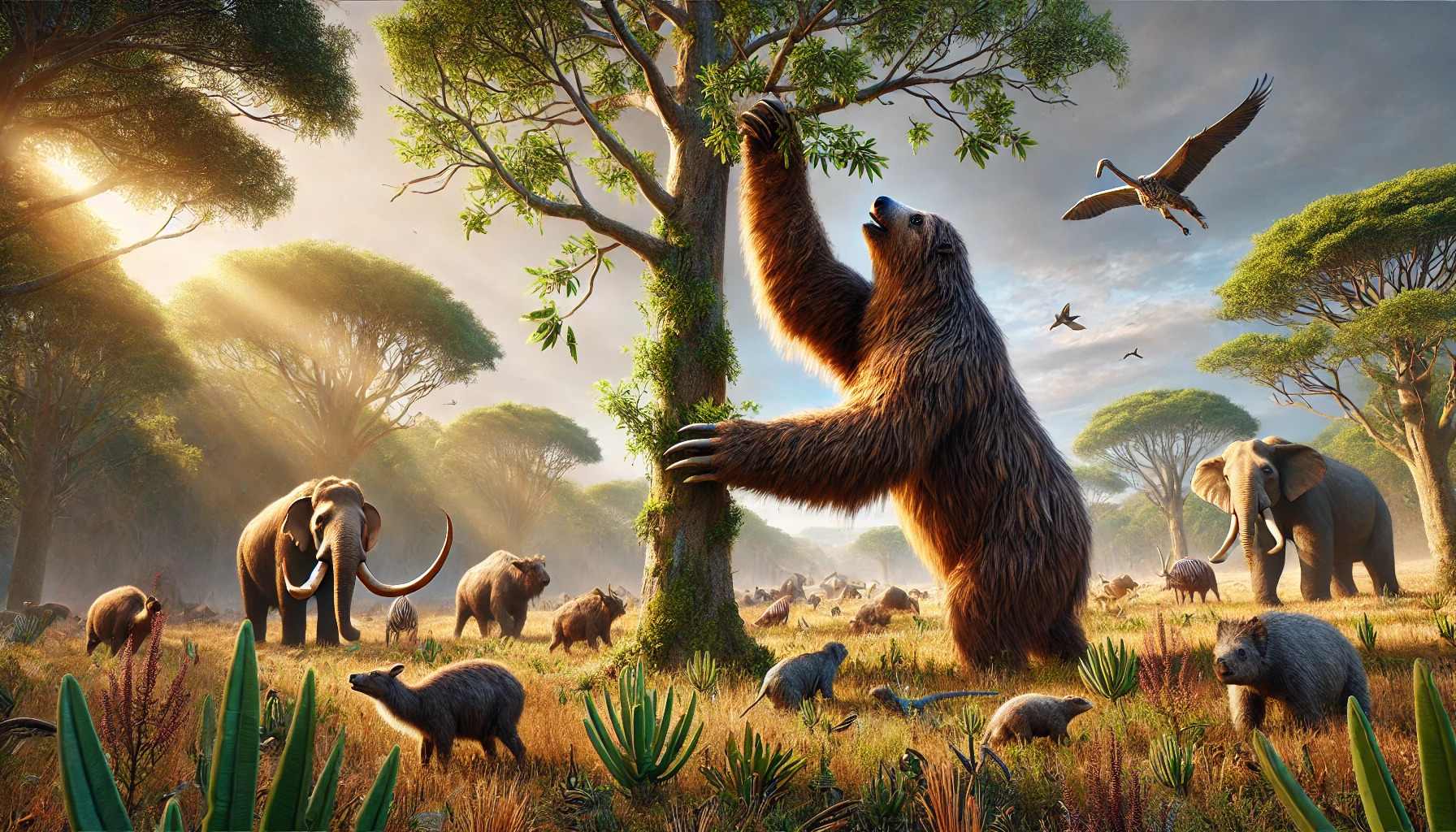The extinction of large herbivores, such as the ground sloth, had significant ecological impacts that shaped their environments. The removal of these massive plants grazers led to changes in plant communities and ecosystems, affecting everything from vegetation structure to soil health. Understanding these effects sheds light on the interconnectedness of species and how their absence can transform landscapes.
In ecosystems where ground sloths once roamed, the vegetation adapted to the unique grazing habits of these animals. Without them, certain plants flourished while others struggled, which ultimately affected the entire food web. This shift not only altered the composition of plant life but also influenced smaller herbivores and predators reliant on a balanced ecosystem.
Exploring the consequences of extinct herbivores opens a window into the past, revealing how the loss of one species can ripple through an entire environment. Studying these ecological changes can help today’s conservation efforts manage ecosystems more effectively in a world where biodiversity is increasingly threatened.
Overview of Extinct Herbivores
Extinct herbivores had a significant role in shaping ecosystems. They varied greatly in size and habitat preferences, influencing their environments in unique ways. Understanding these creatures helps in recognizing their impact on the ecological balance.
Diversity of Herbivorous Megafauna
Herbivorous megafauna included a range of large animals, often weighing over 100 kilograms. Examples are mammoths, giant ground sloths, and saber-toothed cats. These creatures played crucial roles as grazers and browsers, interacting with plant life and other animals.
Their sizes varied widely. For instance, some of the smaller species were about the size of a deer, while others, like mammoths, could weigh up to 12 tons. This diversity allowed them to occupy various ecological niches, contributing to the complexity of their ecosystems.
As these herbivores roamed their habitats, they helped maintain the balance between plant growth and animal life. Their extinction led to changes in vegetation and the dynamics of their respective ecosystems.
The Ground Sloth and Its Habitat
The ground sloth was a fascinating herbivore, particularly known for its massive size and unique features. It inhabited regions across North and South America during the last Ice Age, thriving in diverse landscapes.
These sloths were not your average sloths. They could weigh up to 1,000 pounds and were equipped with long claws, ideal for digging up plants and roots. Their diet mainly consisted of leaves, fruits, and other vegetation.
Ground sloths preferred open forests and grasslands, areas rich in foliage. Their foraging habits significantly impacted plant communities, as they consumed large quantities of vegetation. After their extinction, researchers observed shifts in plant diversity and abundance, as smaller herbivores took on different roles without these giant grazers in the ecosystem.
Ecological Roles and Niches
Ground sloths played important ecological roles in their environments. They influenced vegetation patterns and contributed to soil health. Understanding these impacts helps highlight the significance of their extinction.
Impact of Ground Sloths on Vegetation
Ground sloths were primarily herbivores. They ate a variety of plants, including leaves, fruits, and shrubs. Their feeding habits likely helped shape plant communities by pruning and allowing new growth.
By consuming certain species, ground sloths created openings for other plants to flourish. This diversity in vegetation supported other animals in the ecosystem. Without these herbivores, some plant populations may have overgrown, leading to reduced biodiversity.
The size of ground sloths, which often reached impressive heights, allowed them to reach foliage high in trees. This ability meant they could access resources not available to smaller herbivores. As a result, they played a key role in maintaining a healthy balance within their habitats.
Soil Modification and Nutrient Cycling
Ground sloths significantly influenced soil health. As they moved through their habitats, their large bodies compacted the soil. This compaction could help with drainage and aeration, which are vital for plant growth.
In addition, sloths contributed to nutrient cycling. Their waste, rich in nutrients, enriched the soil, promoting plant growth. This process supported the overall health of the ecosystem.
The movement of ground sloths across large areas also helped distribute seeds. As they consumed fruits, they transported seeds through their digestive systems. When these seeds were excreted, they could germinate in new locations. This process encouraged plant diversity and ecosystem stability.
Effects on Other Species
The extinction of large herbivores impacted smaller herbivores and predators. Without ground sloths and similar animals, the food chain faced disruption. Smaller herbivores found it harder to compete for food in denser vegetation.
Predators also felt the impact, as their food sources changed. The balance of the ecosystem shifted, leading to possible declines in species that relied on these large herbivores.

